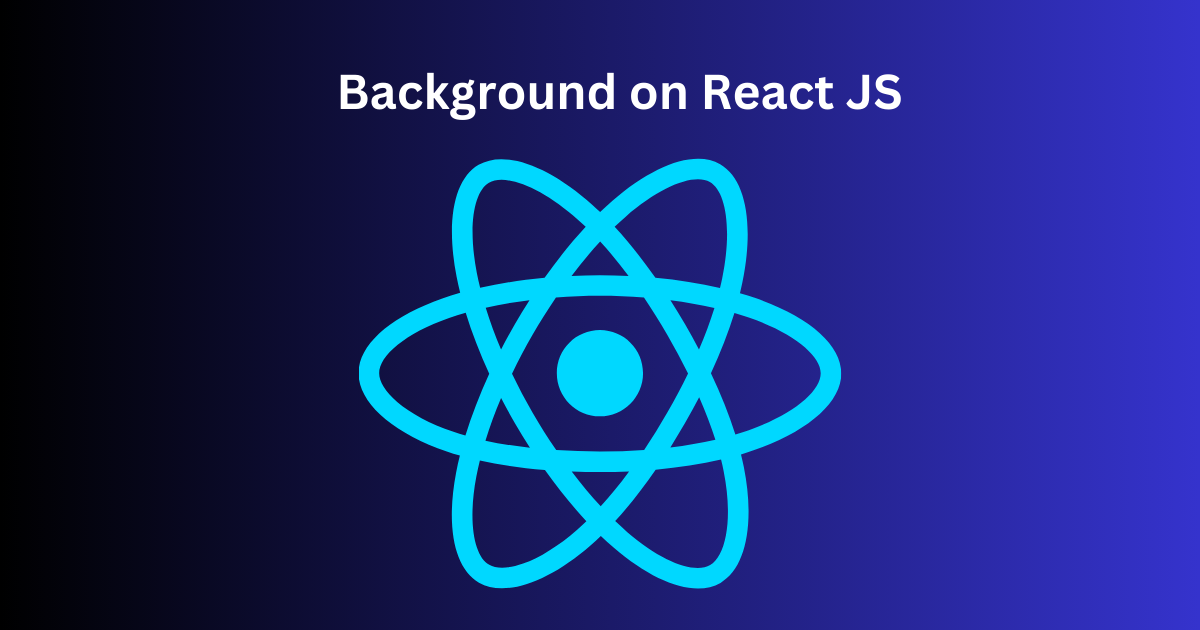Unveiling the Difference Between AngularJS and ReactJS
Welcome to the world of web development, where the battle between frameworks is as fierce as a superhero showdown! In this blog post, we aim to shed light on the fundamental difference between AngularJS and React JS, two prominent frameworks in the world of web development.
As developers, it’s crucial to stay up-to-date with the latest technologies and understand the strengths and weaknesses of various frameworks. In this article, we will dissect the key difference between AngularJS and ReactJS, enabling you to make informed decisions when choosing the right framework for your projects.
So, whether you’re a seasoned programmer seeking to expand and develop your skillset or a curious newcomer eager to explore the fascinating world of JavaScript frameworks, join us as we uncover the nuances that set AngularJS and ReactJS apart and discover the unique capabilities each framework brings to the table.
Strap on your coding gloves and get ready to dive deep into the world of JavaScript frameworks!
Table Of Contents
- Background on Angular JS
- Background on React JS
- Key Differences Between AngularJS and ReactJS
- AngularJS or ReactJS- Which One is Better for Your Project?
- Use Cases and Real-world Examples of AngularJS and ReactJS
- Final Thoughts and Advice
- Frequently Asked Questions
Background on Angular JS
AngularJS is a JavaScript-based open-source web application framework that was developed by Google. It was written and initially released in 2010 and quickly gained popularity among developers due to its powerful features and ability to build dynamic and responsive web applications.
AngularJS follows the model-view-controller (MVC) architectural pattern, making it suitable for developing single-page applications (SPAs).
With its robust features and community support, AngularJS became widely adopted in the web development community. It empowered developers to build complex and interactive web applications with ease.
Background on React JS
ReactJS is a JavaScript library developed by Facebook. It was introduced in 2013 and has since gained widespread popularity among developers. ReactJS is specifically designed for building user interfaces, particularly for single-page applications.
It follows a component-based architecture, allowing developers to create reusable UI components. ReactJS utilizes a virtual DOM (Document Object Model) to efficiently update and render components, resulting in fast and responsive user interfaces.
It also promotes a unidirectional data flow and supports the concept of JSX, which allows developers to write HTML-like syntax within JavaScript.
ReactJS has a large and active community, which has contributed to its growth and the availability of numerous libraries and tools to enhance development.
Key Differences Between AngularJS and ReactJS
1. Language Approach
AngularJS: AngularJS relies on JavaScript and HTML for development. It follows a declarative approach, where developers define the desired outcome of an Angular application and let AngularJS handle the implementation details.
ReactJS: ReactJS uses JSX, a syntax extension for JavaScript, which allows developers to write HTML-like code directly within JavaScript files. It combines HTML and JavaScript seamlessly, resulting in a more intuitive development experience.
2. HTML Templating vs. JSX
HTML templates for defining the structure and presentation of components. Developers work with HTML directives and expressions to bind data and logic to the templates.
ReactJS: ReactJS uses JSX, which enables developers to write HTML-like code directly within JavaScript files. JSX allows for the creation of reusable and self-contained components, promoting a cleaner separation of concerns between logic and presentation.
3. Learning Curve have a steeper learning curve for developers new to web development. It introduces additional features and concepts specific to AngularJS, but it can be advantageous for developers already familiar with JavaScript and HTML.
ReactJS: ReactJS, with its JSX syntax, offers a more gradual learning curve for developers familiar with JavaScript. JSX’s combination of HTML and JavaScript provides a cohesive and familiar environment, making it easier to reason about the component structure and data flow.
4. Component-Based Development
AngularJS: AngularJS emphasizes the development of large-scale applications through its component-based architecture. It provides a set of predefined directives and services to create reusable components and manage their interactions.
ReactJS: ReactJS is centered around component-based development. It encourages the creation of reusable components that encapsulate both the UI and logic. This approach promotes modularity, reusability, and maintainability of code.
5. Syntax Preference
AngularJS: Developers comfortable with HTML and prefer a more template-focused approach may find AngularJS appealing. Its utilization of HTML templates allows for a familiar environment while incorporating additional Angular-specific features.
ReactJS: Developers who prefer a more unified and cohesive development experience, bringing HTML and JavaScript together, may prefer ReactJS. The JSX syntax provides seamless integration of components and facilitates a clearer separation of concerns.
6. Two-Way Data Binding
AngularJS: AngularJS offers two-way data binding, where changes in the model automatically update the view, and vice versa. This simplifies the development process as developers don’t need to manually update the view when the data changes.
ReactJS: ReactJS follows a one-way data flow, known as unidirectional data binding. It promotes a more predictable data flow, making it easier to understand and debug the application. Data updates in ReactJS are typically handled through state management and event handling.
7. Dependency Injection
AngularJS: AngularJS provides built-in dependency injection, which allows developers to manage dependencies between different components and services. This helps in organizing and decoupling the code, making it more modular and testable.
ReactJS: ReactJS does not have built-in dependency injection. Instead, it encourages the use of third-party libraries like Redux or React Context API for managing application state and sharing data between components.
8. Virtual DOM
AngularJS: AngularJS does not use a virtual DOM. Instead, it relies on its own change detection mechanism to efficiently update the real DOM, when data changes. AngularJS tracks changes in the model and updates the view accordingly.
ReactJS: ReactJS uses a virtual DOM, a lightweight copy of the actual DOM, to optimize rendering performance. When the state or props of a component change, ReactJS compares the virtual DOM with the actual DOM and only updates the necessary parts, resulting in efficient rendering.
9. Templating and Directives
AngularJS: AngularJS provides a rich set of built-in directives and templating features. These include ng-repeat, ng-if, ng-model, etc., which enable developers to easily manipulate and control the behavior of elements in the view.
ReactJS: ReactJS does not have a built-in templating engine or directives. Instead, JSX allows developers to directly define and render components, providing a more flexible and expressive way of creating UI elements.
10. Development Tooling
AngularJS: AngularJS comes with its own CLI (Command Line Interface) tool, Angular CLI, which provides a set of commands for creating, building, and testing AngularJS applications. It offers users a structured development environment and a comprehensive ecosystem of tools and libraries.
ReactJS: ReactJS does not have an official CLI tool, but there are several popular third-party tools like Create React App and Next.js that simplify the setup and development of ReactJS applications. Additionally, ReactJS has a vast ecosystem of libraries and tools for different aspects of development.
These were some of the major difference between AngularJS and ReactJS. It’s important to consider these factors while choosing a framework based on the specific requirements and preferences of the project and development team.
AngularJS or ReactJS- Which One is Better for Your Project?

Choosing between AngularJS and ReactJS depends on various factors, including the project requirements, team expertise, and long-term goals. Here are some considerations to help determine which framework may be better suited for your project:
AngularJS may be a better choice if:
- Full-featured framework: AngularJS provides a comprehensive framework with built-in features like two-way data binding, dependency injection, and routing. If you need an all-inclusive solution for building large-scale applications, AngularJS may be a good fit.
- Strong community and ecosystem: AngularJS has a mature and active community, offering extensive documentation, tutorials, and support. It also has a broad range of third-party libraries and tools available, contributing to a robust ecosystem.
- Legacy or complex projects: If you’re working on an existing AngularJS project or have complex requirements that demand the capabilities of a mature framework, sticking with AngularJS may be advantageous to maintain code consistency and leverage existing components.
ReactJS might be a better choice if:
- Component-based development: ReactJS excels in creating reusable and self-contained components, promoting modularity and reusability. If your project emphasizes component-based architecture and scalability, ReactJS provides a strong foundation.
- Performance and virtual DOM: ReactJS’s virtual DOM enables efficient rendering and updates, resulting in better performance. If your application involves frequent updates to the UI or has performance-critical requirements, ReactJS’s virtual DOM approach can be beneficial.
- Flexibility and ecosystem: ReactJS offers more flexibility and is often considered a library rather than a full-fledged framework. This allows for greater customization and integration with other libraries or frameworks. ReactJS also has a vast ecosystem with numerous tools and libraries available for specific needs.
- JavaScript proficiency: If your team is already proficient in JavaScript, the JSX syntax used in ReactJS will feel familiar. ReactJS leverages JavaScript for defining components and logic, providing a more cohesive development experience for JavaScript developers.
Ultimately, the choice between AngularJS and ReactJS depends on your project’s specific requirements, team expertise, and long-term goals. AngularJS is suitable for comprehensive, feature-rich applications and legacy projects, while ReactJS excels in component-based development, flexibility, and performance. Consider evaluating these factors in conjunction with your project’s needs to make an informed decision.
Use Cases and Real-world Examples of AngularJS and ReactJS
When it comes to web development, there’s nothing quite like seeing the frameworks in action. Let’s dive into the captivating world of AngularJS and ReactJS by exploring some intriguing case studies and real-world examples that showcase their true potential on the web page.
1. The Weather App Wonder
Imagine a weather application that dynamically updates weather conditions with a delightful user interface. AngularJS shines in this case, effortlessly handling complex data binding and providing real-time updates. Witness how AngularJS transforms this app into a smooth, interactive experience.
2. The E-commerce Marvel
Step into the realm of e-commerce with ReactJS, where performance and scalability are paramount. Explore a stunning online store that leverages React’s virtual DOM and component-based architecture. Behold as the product catalog comes to life with lightning-fast rendering, ensuring a seamless shopping journey.
3. The Enterprise Solution
In the corporate landscape, AngularJS demonstrates its prowess as an enterprise-grade solution. Delve into a comprehensive management platform that harnesses AngularJS’s robustness and modularity. Experience the power of directives and controllers as they effortlessly handle complex business processes.
4. The Social Media Sensation
Social media platforms require a dynamic, real-time experience, making ReactJS a natural choice for mobile apps. Witness the captivating world of a social media app built with React, an app where the virtual DOM works its magic, delivering instant updates and a smooth user interface that keeps users engaged.
5. The Travel Planner Extraordinaire
Travel planning involves intricate interactions between web apps and real-time updates. AngularJS takes the stage, providing a responsive and interactive travel planner app. Experience the seamless integration of maps, calendars, and booking systems that AngularJS brings to the table, making travel planning a breeze.
6. The Streaming Sensation
Streaming platforms have revolutionized entertainment, and ReactJS plays a significant role in their success. Immerse yourself in a streaming service that utilizes React’s one-way data flow, enabling a seamless video playback experience and effortless navigation through an extensive content library.
7. The Education Ecosystem
Education platforms require robustness and flexibility to cater to diverse learning needs. Explore an educational ecosystem powered by AngularJS, where features like interactive quizzes, progress tracking, and personalized recommendations create an engaging and tailored learning experience.
8. The Interactive Dashboard Marvel
Dashboards demand real-time updates and an intuitive user interface. Witness ReactJS in action as it crafts a visually stunning and interactive dashboard, utilizing its virtual DOM to handle rapid data changes and rendering dynamic charts and graphs with exceptional performance.
9. The Banking Solution of Tomorrow
Banking applications demand security, reliability, and a seamless user experience. Enter the world of an innovative banking solution built on AngularJS, where robust authentication, transaction handling, and personalized financial insights come together to create a banking experience like no other.
10. The Travel Booking Revolution
The travel booking industry requires fast, responsive interfaces and effortless navigation. Experience the transformative power of ReactJS in a travel booking platform, where instant search results, interactive maps, and smooth booking processes combine to redefine the way we plan our journeys.
These captivating case studies and real-world examples demonstrate the incredible potential of AngularJS and ReactJS. Regardless of the various difference between AngularJS and ReactJS, these frameworks continue to shape the digital landscape and empower developers to create extraordinary, web apps and experiences.
Final Thoughts and Advice
AngularJS, with its powerful directives and controllers, excels in managing large-scale projects and offers comprehensive documentation for a steep learning curve. On the other hand, ReactJS embraces the concept of reusable components and boasts vibrant community support with an easier learning curve.
Considering project suitability, AngularJS shines in complex, enterprise-level applications, while ReactJS thrives in projects that demand flexibility and value a lightweight approach. It is essential to evaluate the specific requirements of your project and choose the framework that aligns best with your goals.
Maintenance and long-term support are vital considerations, and here ReactJS’s stable and backward-compatible updates to the server, prove advantageous, while AngularJS necessitates a transition to newer server versions for ongoing support.
Whether you choose AngularJS or ReactJS, continuously learning and exploring the evolving frameworks will empower you to create exceptional web applications and contribute to the ever-expanding world of web development. So, embrace the difference between AngularJS and ReactJS, leverage their strengths, and craft remarkable native apps and digital experiences for the future.
Frequently Asked Questions
Is AngularJS similar to React?
Angular has a similar architecture to React. The material can be reused in the same way as other materials and therefore become infinitely recyclable.
Which is easy ReactJS or AngularJS?
ReactJS is better than AngularJS. ReactJS is simple to understand and execute while AngularJS is difficult based upon a library’s syntax. While the former is Open Source, AngularJs is in an MVC framework.
What is ReactJS used for?
ReactJs framework is a Javascript framework developed by Facebook. This tool is useful to create interactive websites native apps and applications quickly with very little code that you can use with vanilla Javascript.
What is ReactJS for beginners?
React provides JavaScript libraries for creating interfaces. Reacts is typically used for developing a single-page application. It enables reusable UI component design.
Is AngularJS different from js?
Java Script is a programming program used to create HTML dynamic websites that have interactive effects. On the one hand, AngularJS is a JS framework built from a Java script and adds functionalities to HTML and javascript code.
What is the Angular framework used for?
Angular is an application-building tool that supports HTML / type scripts and is designed for websites with simple web pages. Angular script uses type script. It provides functionality as part of the TypeScript Library that can be imported into your application.












